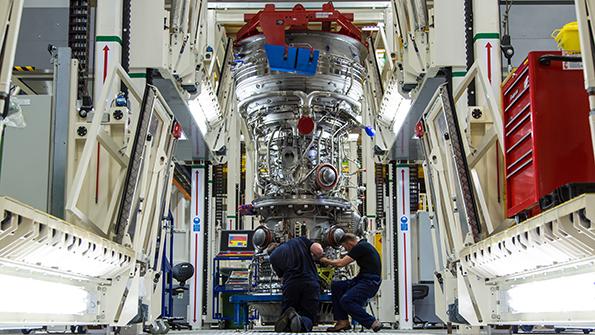
Aeroengine OEMs are facing strong headwinds after a bullish decade of changes and new technologies. Production and aftermarket revenues are being crushed while risks are increasing, and new investment is required. Aeroengine OEMs face five crucial questions:
1. When will aftermarket demand return? Aeroengine OEMs derive all of their air-transport profits from the $30 billion aeroengine maintenance, repair and overhaul (MRO) segment, which was experiencing robust growth until the COVID-19 crisis. Shop visits and aftermarket activity are down 50-60% and will likely remain depressed for another 2-3 years as thousands of aircraft are retired. Moreover, OEMs must deal with the phenomenon of “green-time management,” which means about 15% of next year’s anticipated shop visits could be deferred, postponing the corresponding spare-parts business. AeroDynamic Advisory forecasts engine MRO demand will not return to pre-crisis levels until 2023.
2. What is the timing of the next Boeing aircraft? Boeing needs to address its competitiveness issue versus the Airbus A321neo after canceling its new midmarket airplane (NMA) program in January. Many analysts believe a slightly smaller NMA—with perhaps 200-250 seats and requiring new engines—would be the best response. Boeing may decide to offer a a powerplant choice, diverging from its single-engine 737 approach. If Boeing moves forward, Airbus will respond, and major investments by aeroengine OEMs will be required while they are financially challenged.
3. Which sustainable technologies should aeroengine OEMs prioritize? Several years ago, it looked like hybrid-electric or electric propulsion was the future, and OEMs engaged in development programs to realize its potential. Now hydrogen looks like the technology of choice for larger passenger aircraft. Airbus recently unveiled plans for the first commercial zero-emissions aircraft and said its hydrogen-fueled passenger airplanes could be in service as soon as 2035—an approach backed by European governments as part of their climate policy. This creates a conundrum for aeroengine manufacturers: Which technologies should they prioritize for R&D: traditional gas turbines, electric, hybrid-electric or hydrogen?
4. Is it time to replace the razor-razorblade business model? This question has haunted aeroengine OEMs for the last decade. The traditional aeroengine business model is to invest billions in a clean-sheet engine, sell at a loss and earn profits on 4-6 overhauls over the engine’s life. Three trends upended this business model. First, investment requirements have grown as engine manufacturers wring efficiency gains out of conventional gas turbines. This means larger technical risks, which increases teething problems for new engines. Rolls-Royce (Trent 1000), CFMI (Leap) and Pratt & Whitney (GTF) have spent billions of dollars to address these issues.
At the same time, engine reliability has increased, which means reduced aftermarket revenue. Most CFM56-7s, for example, remained on 737NGs for seven years or more before their first overhauls. But now, OEMs can anticipate 3-4 overhauls over the life of an engine, sometimes fewer.
Third, the risk of investment has risen, thanks to the sustainable aviation wild card. The aeroengine business model clearly needs to be updated, but will customers be willing to pay more up front for the technologies they desire? If not, we could see consolidation to fewer OEMs.
5. What is the future for Rolls-Royce? It seems as if all the byproducts of the COVID-19 crisis work against this iconic OEM: Airlines are downgauging and shifting away from twin-aisles (Rolls’ focus), its customers depend more on international travel, and its revenue is heavily dependent on cost-per-hour aftermarket agreements. Its engines’ flying hours were down 75% in May-July 2020. Add to this its sorry financial state. Rolls lost $7.1 billion in the first half of this year, its balance sheet is in tatters, and it faces short- and long-term financial challenges too numerous to list. Although it plans to sell $2.6 billion in assets to improve liquidity, it is not clear that Rolls can make it to the other side of the crisis. This raises intriguing possibilities. Could we see a lifeline extended from private equity or the British government? Might this be the catalyst to overcome significant political obstacles for a “dream merger” with Pratt & Whitney?
The once healthy aeroengine segment suddenly is under duress, and the answers to these questions will determine its shape and structure for the foreseeable future.
The views expressed are not necessarily those of Aviation Week.


Comments